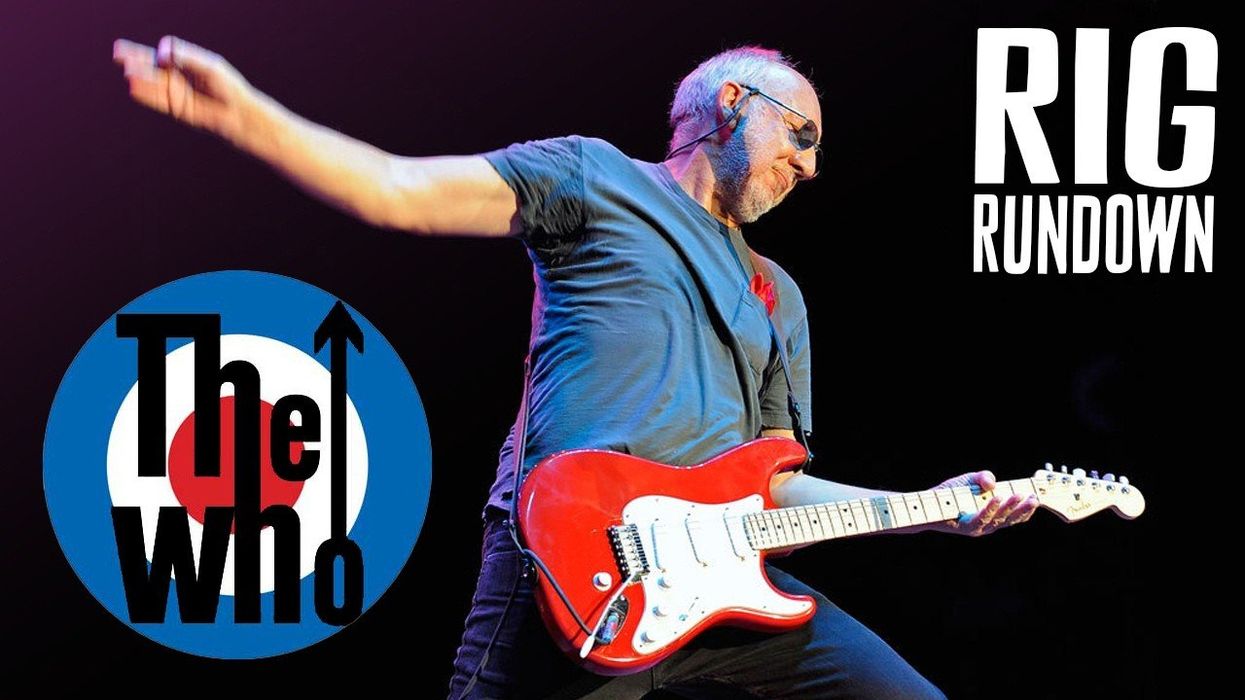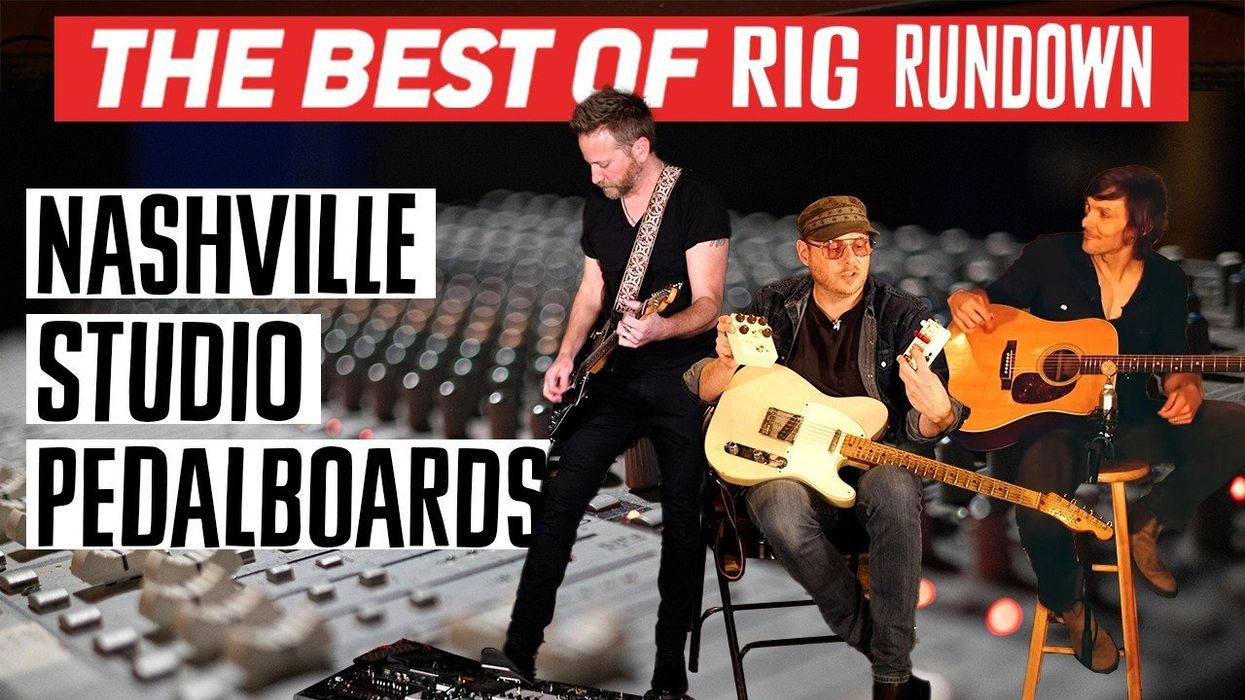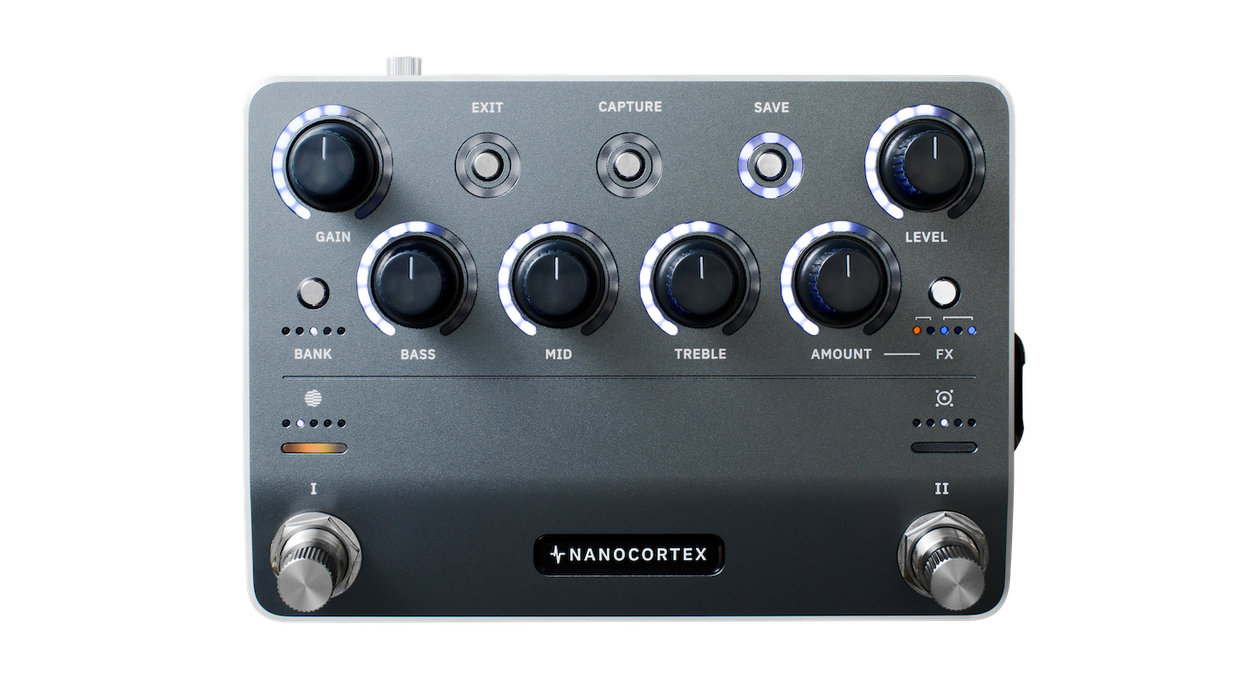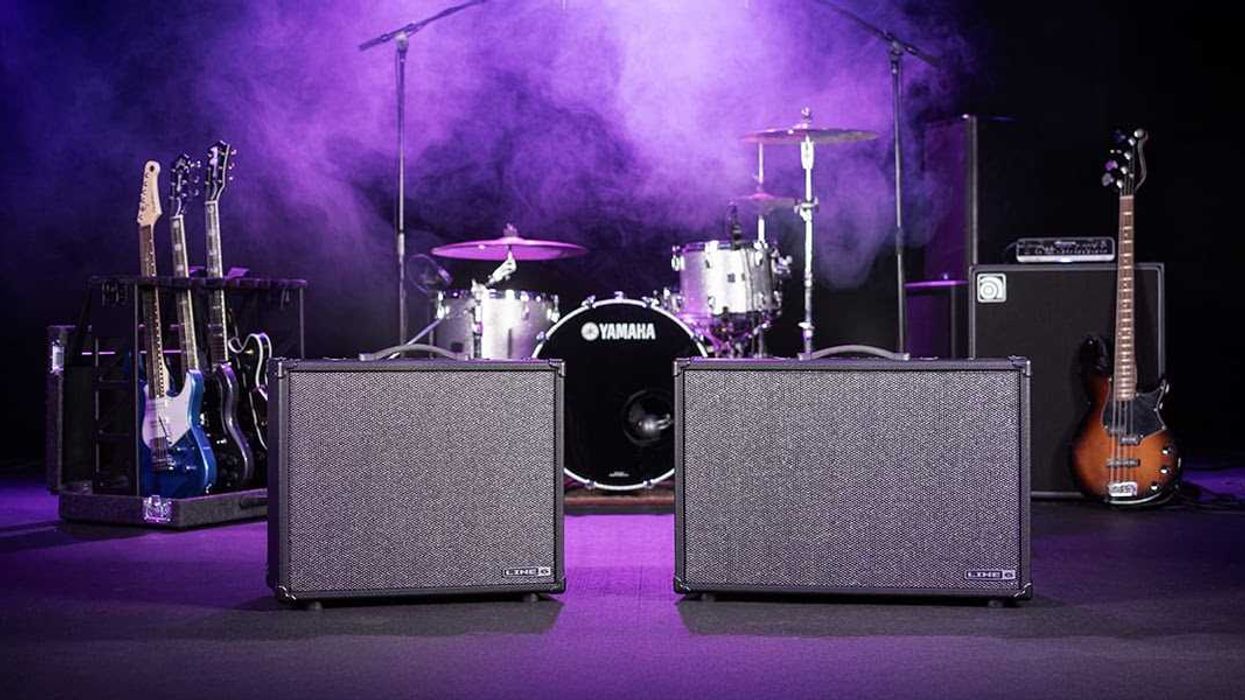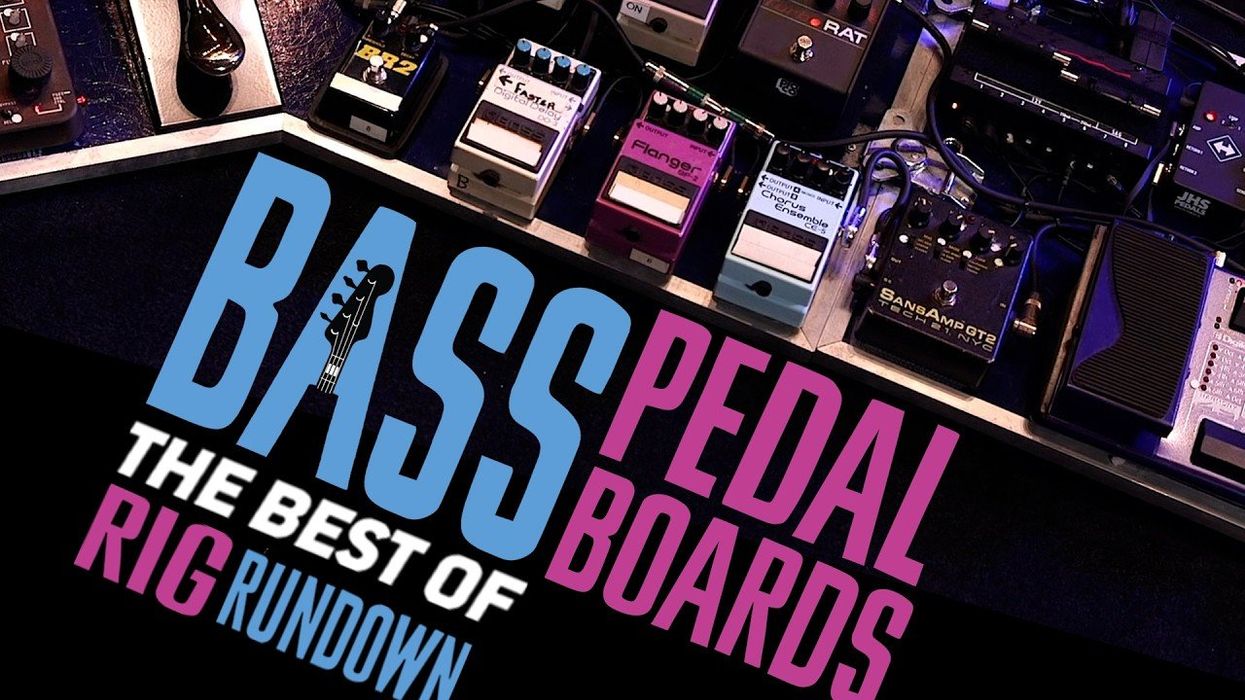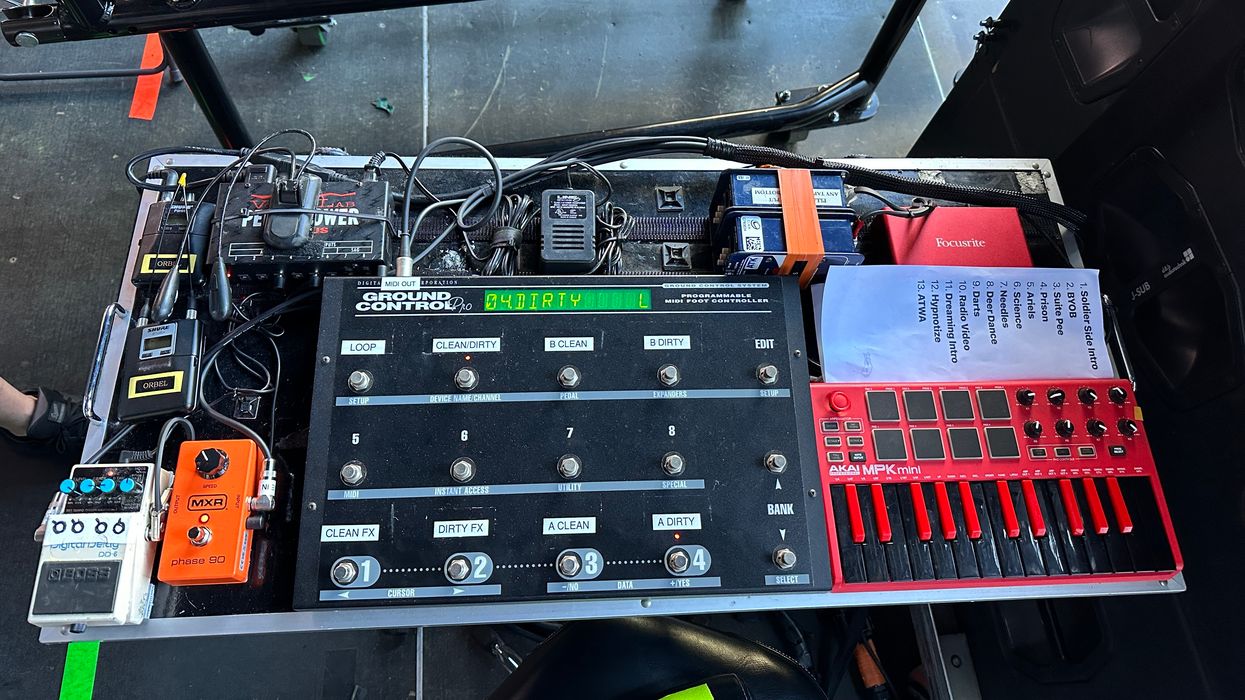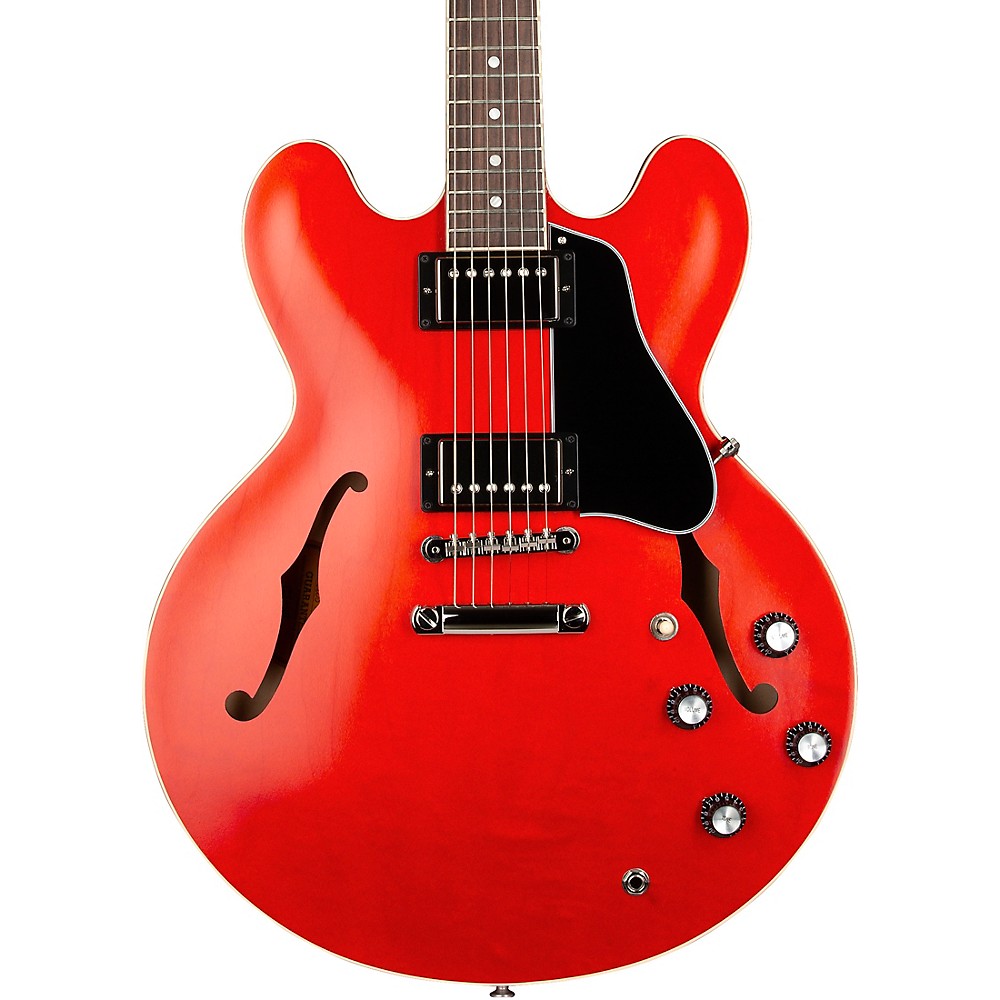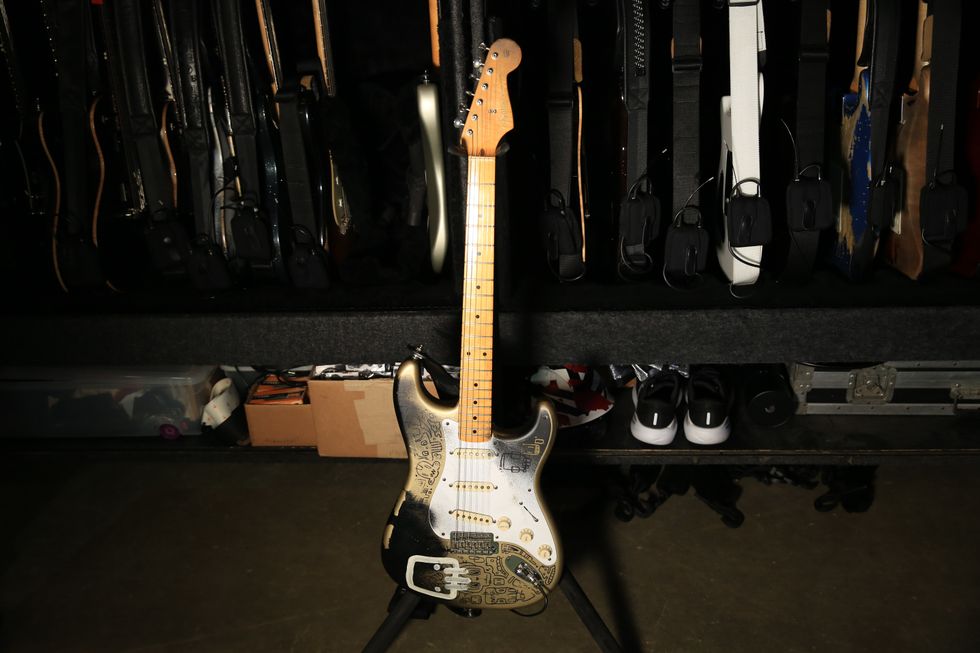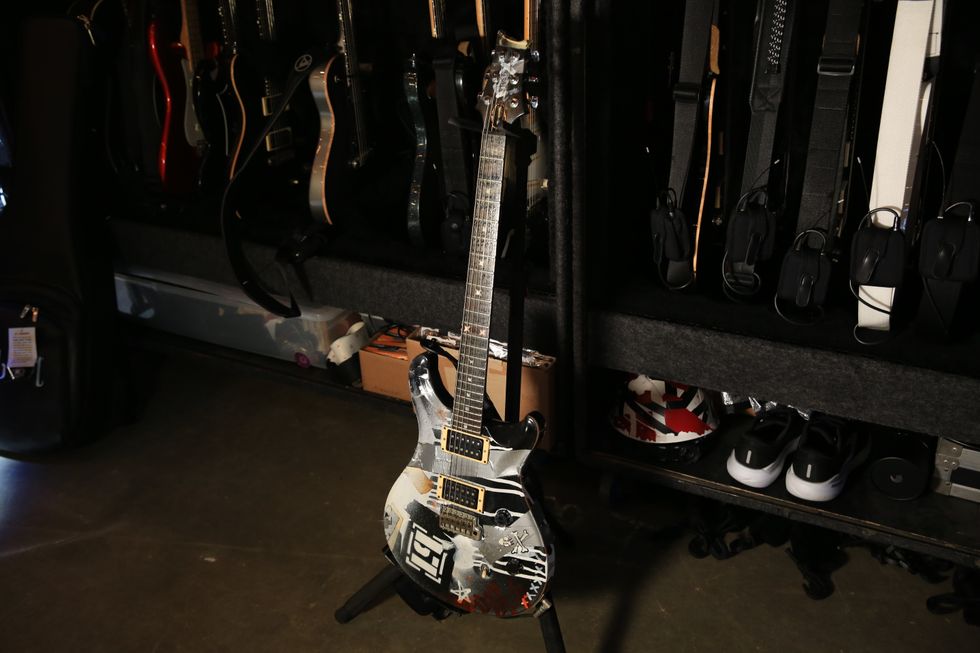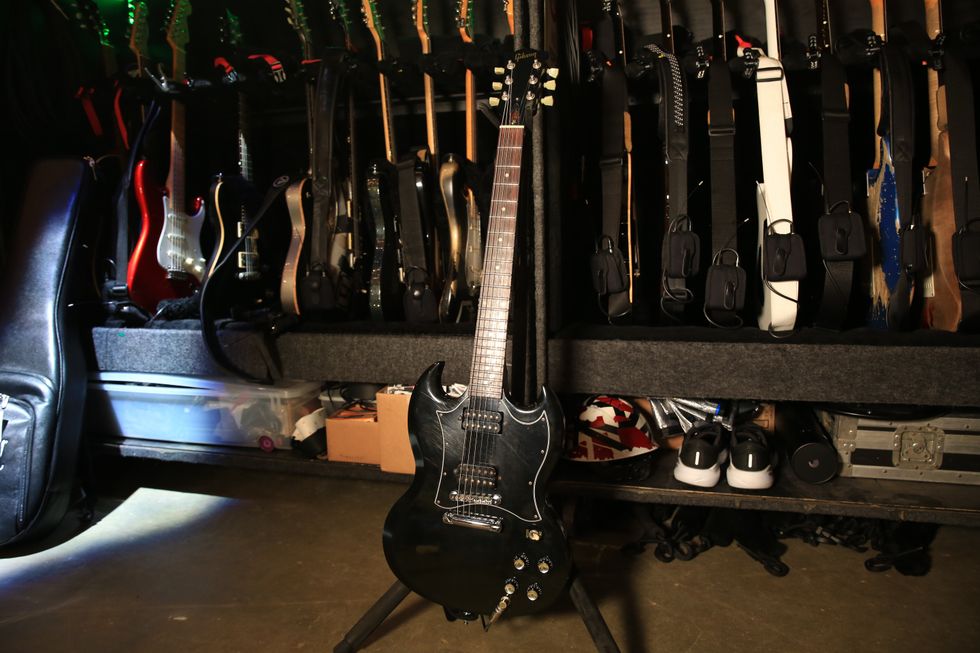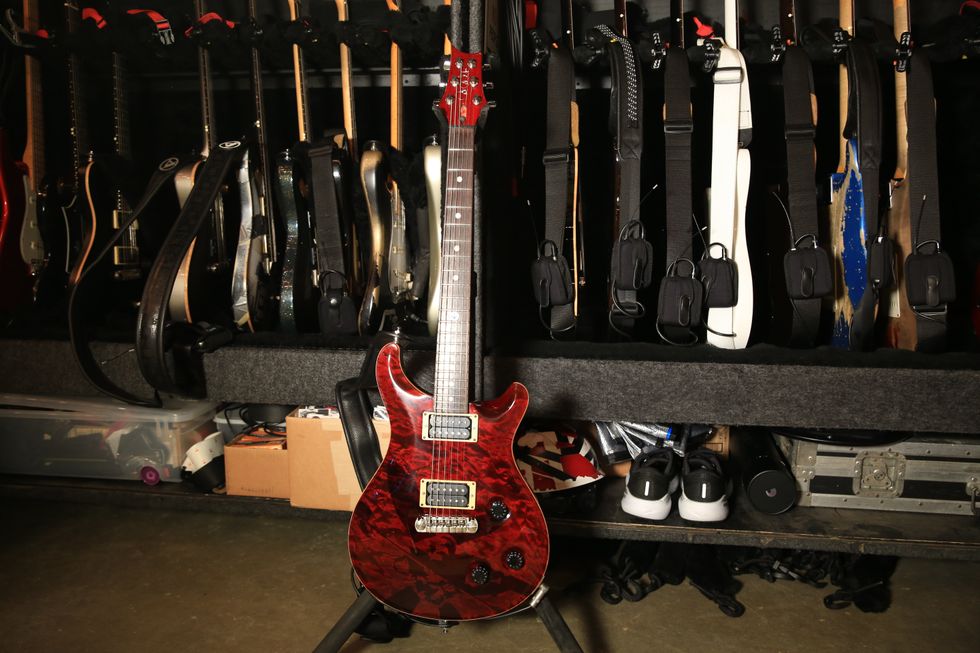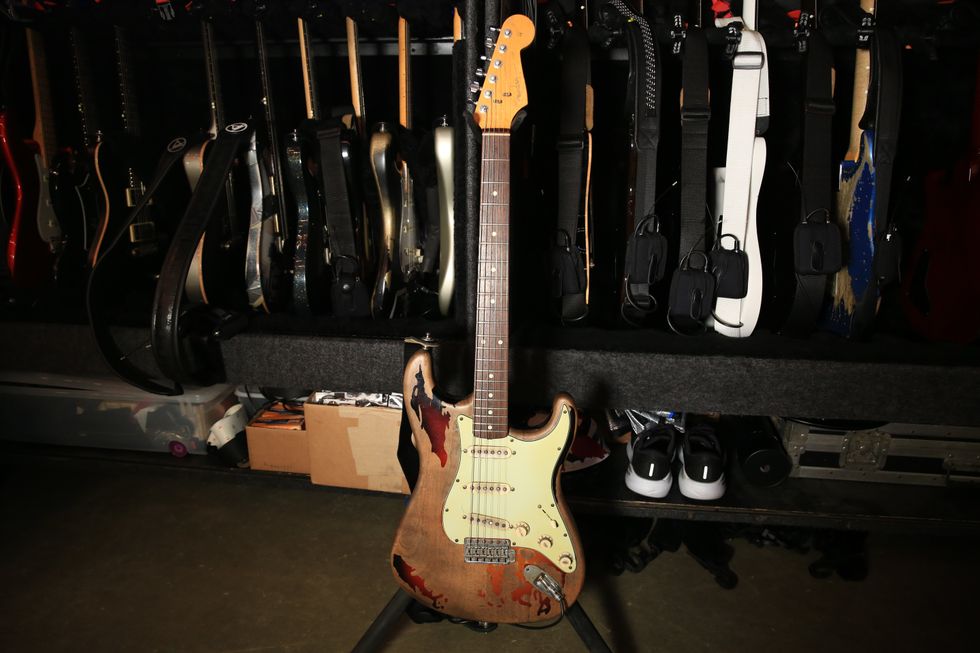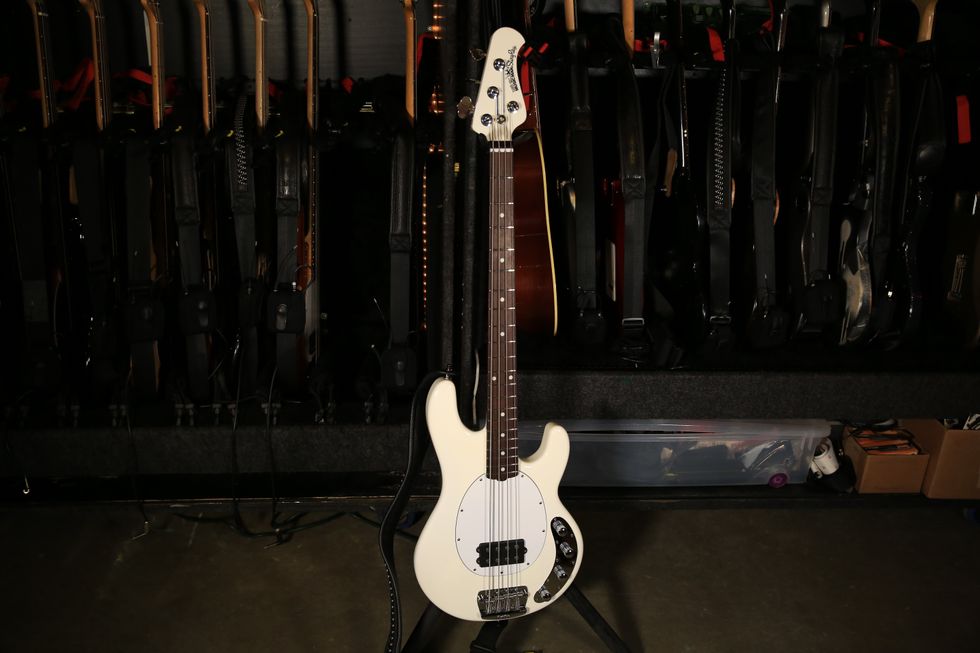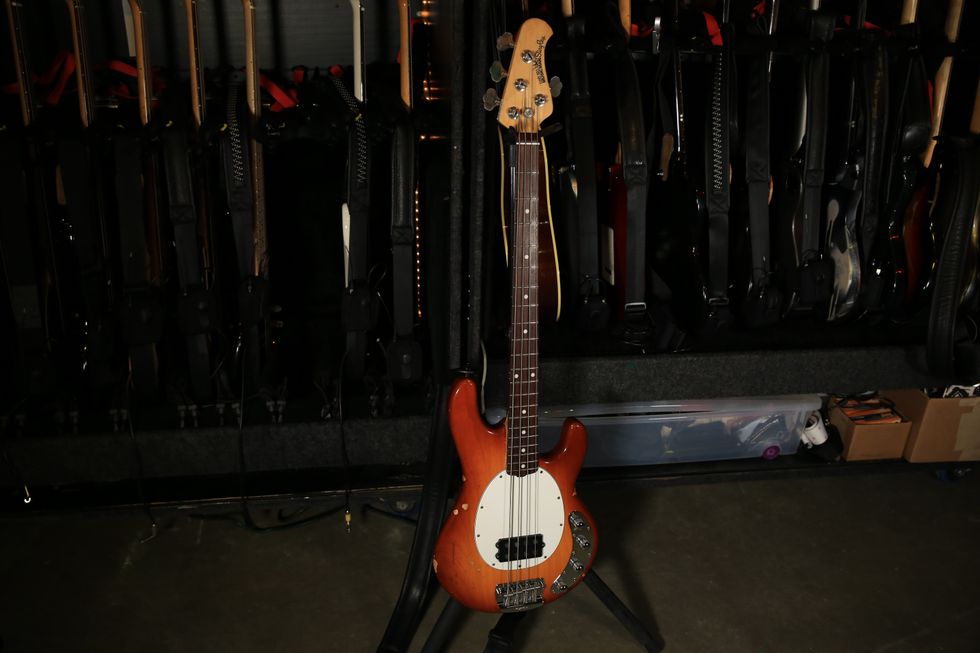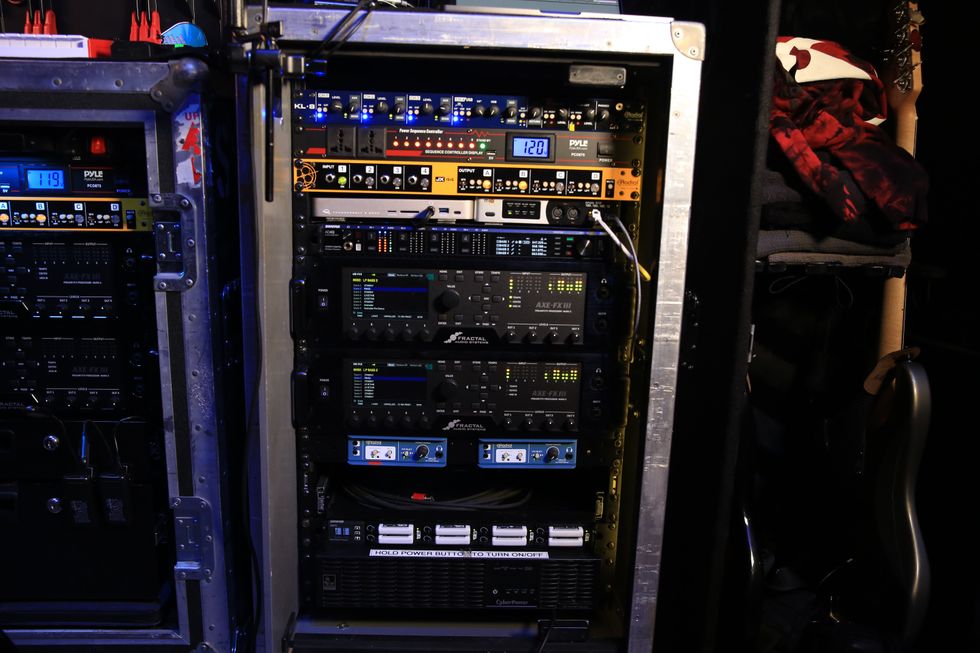The hard-rocking Aussie butt-kicker goes minimalist for his band’s current tour: a Line 6 HX Stomp, three guitars, and a modest pedalboard. And yes, he’s slowly working toward a new album, too.
When we walked into Nashville’s Eastside Bowl for this Rig Rundown with Wolfmother’s alpha canine, Andrew Stockdale, it sounded like he was playing his SG through a Marshall stack at head-ripping volume. Nope! Stockdale was blasting skulls apart with a Line 6 HX stomp doing the heavy tonal lifting. Surprise!
It's part of his strategy for traveling lite in support of Rock Out, the Australian outfit’s 2021 album, on a make-up tour of the States that was preempted by the Covid shutdown. For Stockdale, the rest of his formula for playing his blood-and-guys rock 'n' roll live includes an SG, a White Falcon, and a vintage Supro, and … no traditional amps.
“I used to have, like, three Voxes–cabs and everything up there. And we had a trailer behind the bus and two guys to carry it, who'd have a beer and high-five each other after they loaded out,” Stockdale recounts. “Now they‘re gone, all the amps, and them gone.”
Here’s a close-up look at what’s onstage with Stockdale right now, as he uses minimalist gear to create maximum sound!
Brought to you by D'Addario:
https://ddar.io/wykyk-rr
https://www.daddario.com/XPNDRR
The Red Dog
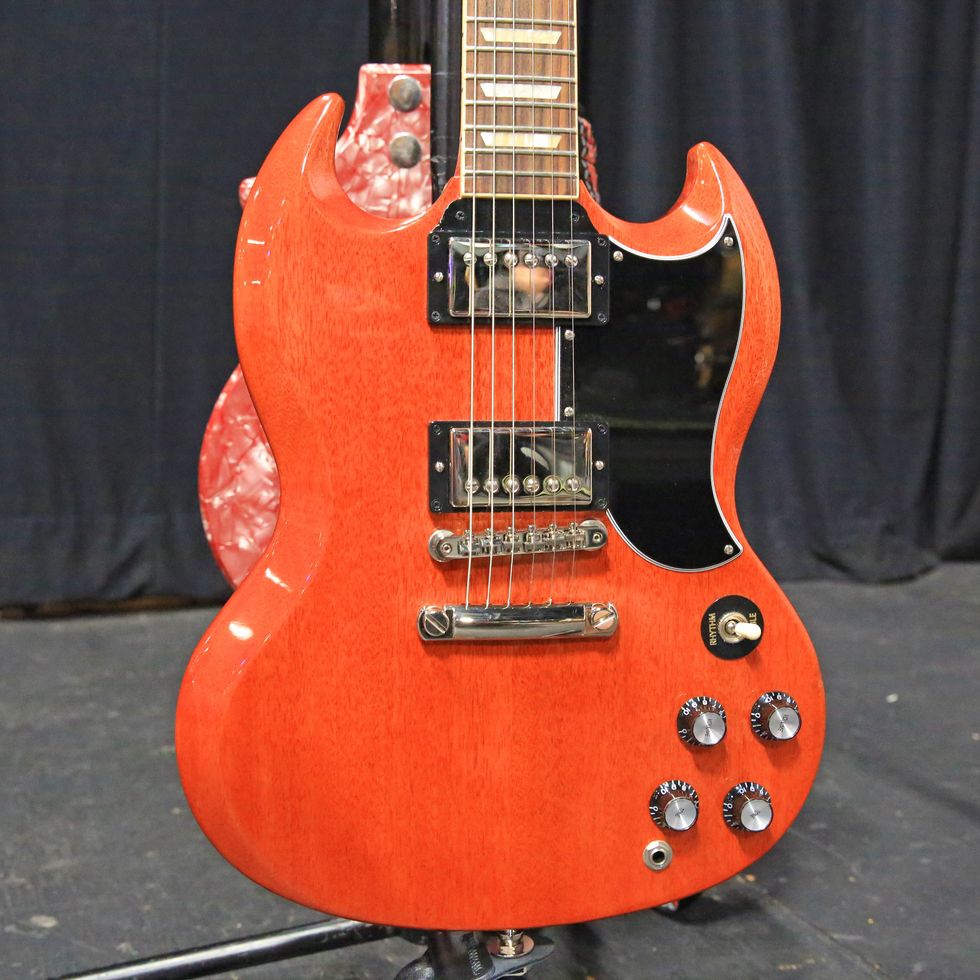
This ’61 Gibson SG reissue with 61T humbuckers is a loaner. Stockdale flew from Australia without guitars—part of his smart-travel initiative. He strings his electrics with .010 to .042 sets from Ernie Ball. He also uses EB’s .88 mm picks. His SG’s control dials? They’re all the way up, my friends! At home, or in Europe on tour, he plays an ’80s black SG and an Epiphone Explorer
Supro, Man
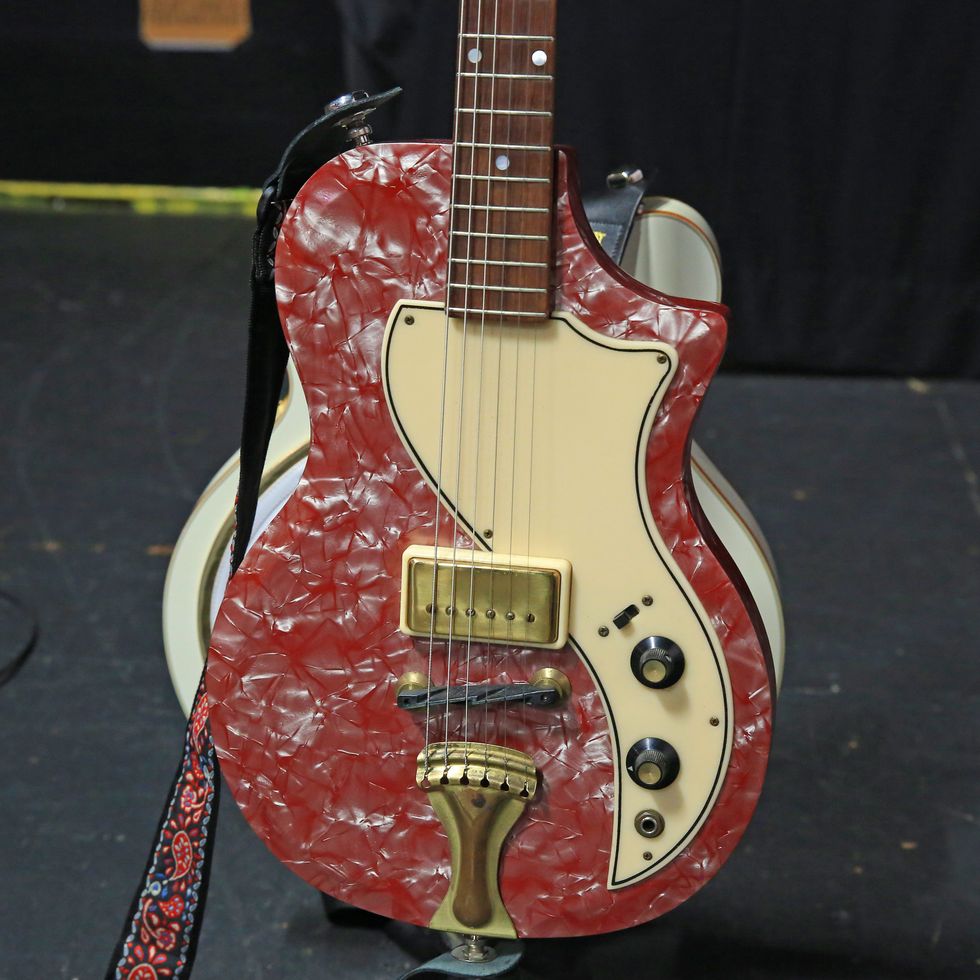
This vintage mother-of-toilet-seat Supro was a gift from Seasick Steve—who Stockdale went surfing with … in England. (Right?) Even more odd is Stockdale’s testimony that Steve is an excellent surfer. This 1-pickup model appears to be a late-’50s Belmont, replete with the original pickup. If you haven’t played a guitar with one of the big-footprint Supro pickups, you're missing a truly special experience. Just ask Ry Cooder.
Big Bird
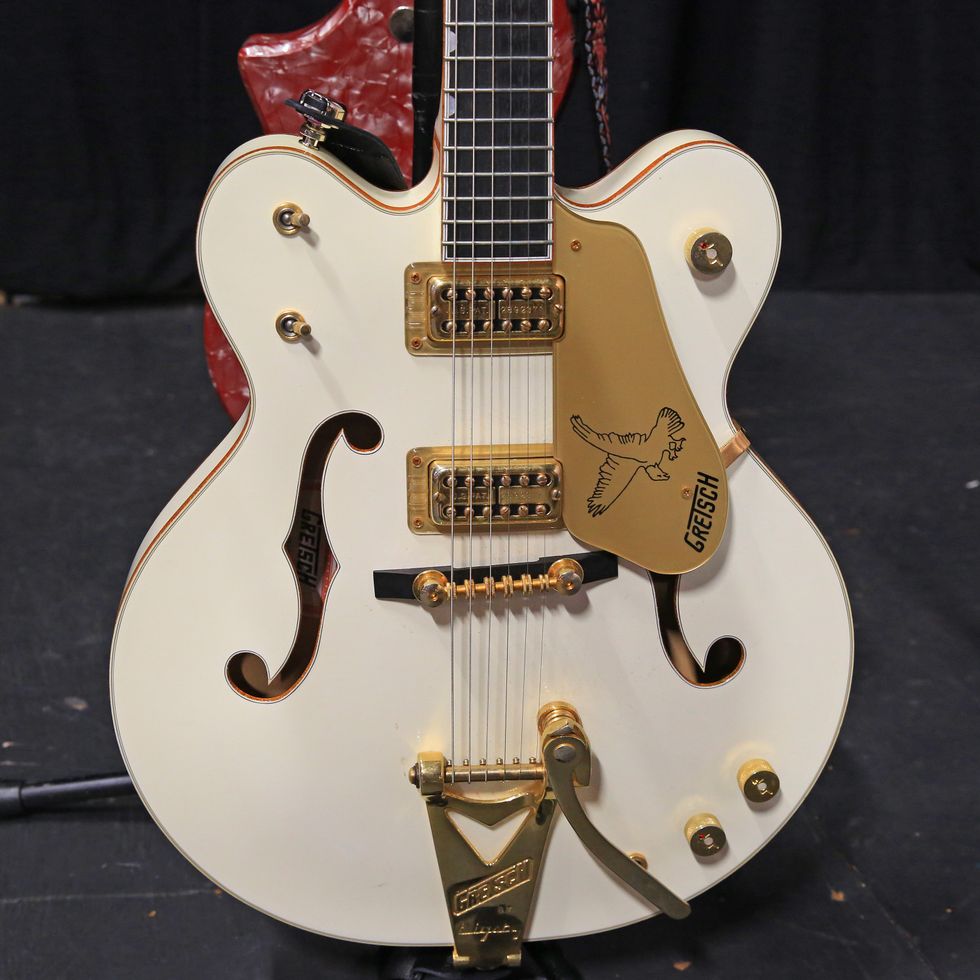
Stockdale uses this Gretsch White Falcon on the song “Apple Tree.” It had a neck break near the body joint on a flight in Australia, and Stockdale glued it up himself, letting it set in a clamp. This model was introduced in 1954, but it sure as hell does more than twang.
Board to Be Wild
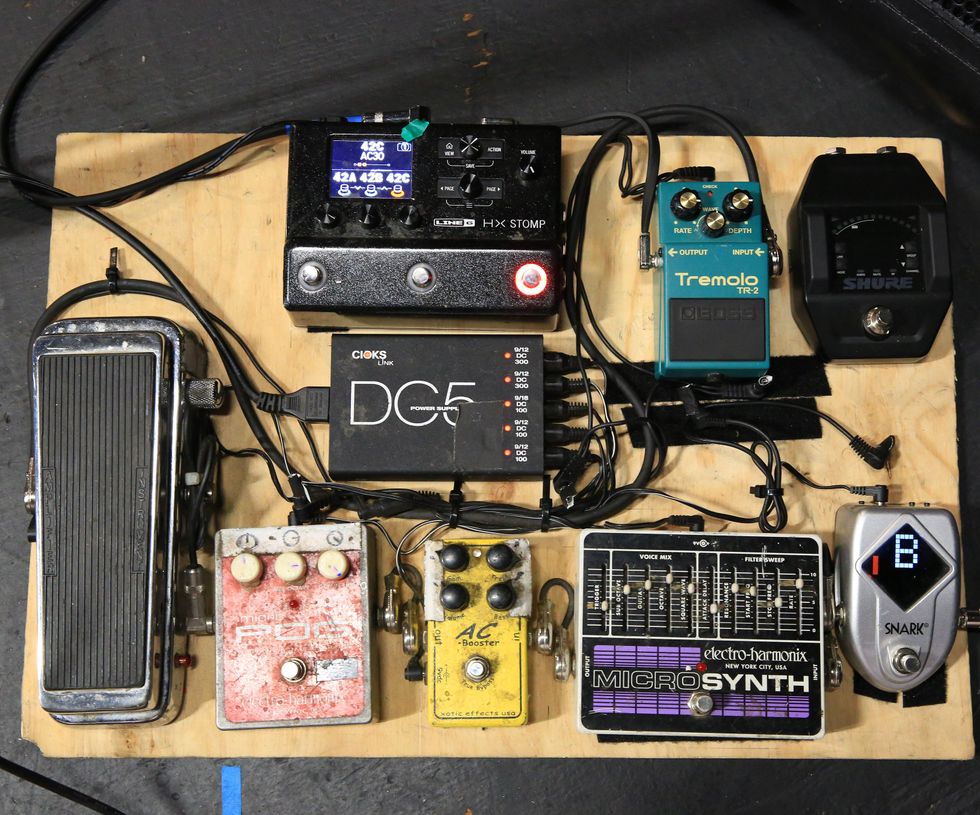
Stockdale moved from traditional amps to Line 6 a few years ago, and blends in with his own pedals, to “give it more character.” His board’s layout is a Snark floor tuner, an EHX Micro Synth (a Wolfmother staple), an Xotic AC Booster, an EHX Micro POG, a Dunlop Cry Baby 535Q Multi-Wah, a Boss TR-2 tremolo, a CIOKS DC5 power supply, and Shure GLXDC+ wireless. Unfortunately, he left the wireless transmitter in a guitar case at home for this tour. Whoops!





